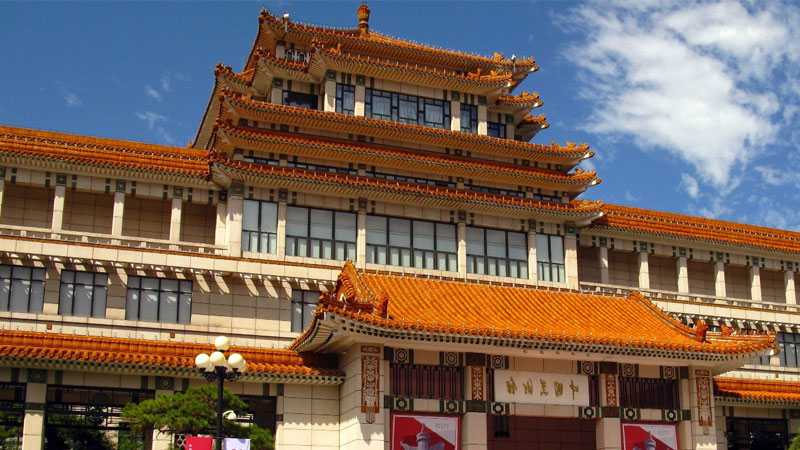Beijing National Museum of Art  Automatic translate
Automatic translate
The Chinese National Museum of Art, located in the center of Beijing, was created to collect, research and display art. The main exhibition hall, an area of 9,900 square meters. m, divided into 17 main exhibition halls. On each of the five floors you can see a variety of works of art.

Currently, the China National Museum of Art holds more than 100,000 works. The main collections were created around 1949. The works created at the end of the Ming Dynasty (1368-1644), the Qing Dynasty (1683-1840) and the early period of the Republic of China (1912-1949) are also special among the entire collection. Most of the collections are outstanding works of art created by famous contemporary artists. In addition, the museum exhibits more than a thousand foreign works.
Art
The works of art collected at the China National Museum of Art were mainly created by contemporary Chinese artists such as Ren Bongyan, Wu Changshuo, Qi Baishi and Xu Beihong, as well as artists such as Wu Guangzhong, Dong Xiuen and Luo Zhongli. Their work attracts great attention of both the Chinese themselves and foreign guests.
Folk art
Folk collections mainly include paper clippings, shadow puppets, masks, ceramics, kites and embroidery.
Shadow puppets are distinctive ideas about the leisure of ancient Chinese people. Mostly people with great influence in the history of China are portrayed. Presentation of shadow puppets takes place in the manner of opera production, with singing. Paper clippings convey the wisdom of Chinese people. They are very popular in rural China, especially in the provinces of Henan and Shanxi.
The art collections in this museum are presented in many forms, such as oil painting, traditional Chinese painting, murals, woodcuts, prints, New Year’s paintings, photography and calligraphy.
Paper clippings are delicate art patterns carved from paper by the locals with just a pair of scissors. Serve in the mascots.
Masks are usually used to play operas in different parts of China, especially for performing on stage. People wear masks at festivals or performances.
Embroidery is also very common in China. With the help of needles, silk threads and other fibers, various patterns are embroidered on the fabrics, such as mandarin ducks, symbolizing eternal love, or flowers, depicting a happy life. China’s famous embroidery is mainly known in Suzhou, Hunan, Sichuan and Guangdong.